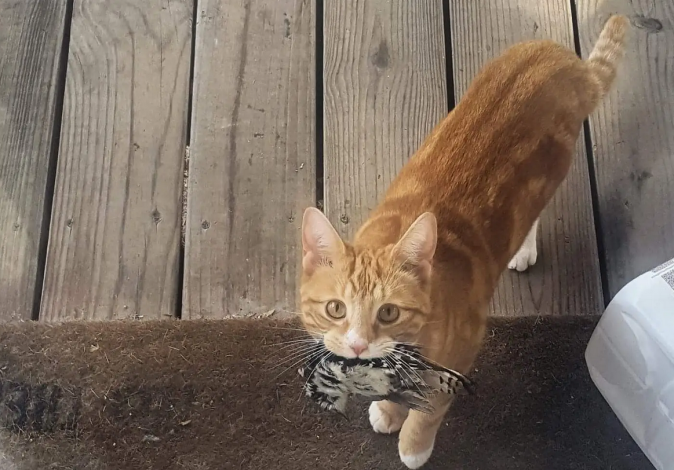
Why do Cats Bring Gifts? Unraveling the Mystery
Have you ever found yourself looking at a dead mouse or lizard on your floor, courtesy of your feline friend? If so, you’re not alone. Cats, whether indoor or outdoor, often exhibit this curious behavior of bringing gifts to their humans, leaving many pet owners puzzled. But why do these seemingly thoughtful creatures feel the need to share these treasures?
Understanding Your Feline's Behavior
Gift-giving in cats is rooted deep in their instinctual behaviors, just as much as scratching, grooming, or kneading. One theory posits that this behavior is reminiscent of their hunting training from their mothers. In the wild, mother cats would catch prey and show their kittens how to stalk and kill. Similarly, when your kitty brings you a gift, they may see you as part of their family unit, sharing their catch with you like a mother would.
Moreover, some cats may enjoy showcasing their hunting prowess, seeing it as a way to bond with their human. Whether it’s a dead animal or a favorite toy, your kitty is essentially saying, “Look what I can do! Aren’t you proud?” Such behaviors indicate a level of trust and affection towards their owner.
What can be done to minimize unwanted gifts?
While it's important to appreciate your cat's intentions, frequent gifts of prey can pose several problems. For one, hunting contributes to a staggering decline in local bird populations—estimates suggest that free-roaming cats kill approximately 2.4 billion birds annually in the U.S. Moreover, small rodents can carry diseases that are hazardous to your cat's health.
So, what can you do? Here are some strategies:
Bell Collars: Consider fitting your cat with a bell collar. The sound alerts potential prey and can significantly reduce hunting success.
Timing is Everything: Limit your cat’s outdoor access during the early morning and dusk when wildlife is most active. This significantly decreases their chances of hunting successfully.
Indoor Enrichment: Create an engaging indoor environment for your cat. Interactive toys that stimulate their hunting instincts can provide a fun outlet for their energy without impacting wildlife.
Build a Catio: If possible, construct an outdoor enclosure—known as a “catio”—that offers your kitty a secure outdoor experience without risking their health or local wildlife.
The Positive Side of Gift-Giving
While it can be disconcerting to find a dead animal or toy in your living space, it’s essential to recognize the affection behind this behavior. Your kitty views you as their family and enjoys engaging you in their natural instincts. It’s a sign of love and a call for interaction rather than a simple nuisance.
Strengthening the bond with your feline can also be achieved through increased playtime. Regular sessions of interactive play not only satisfy your cat’s predatory instincts but also deepen your connection. By replacing outdoor hunting with entertaining indoor games, you're ensuring the health of both your pet and the wildlife around you.
Conclusion: Embracing Your Feline's Nature
Understanding why your cat brings gifts can deepen your appreciation for their unique behaviors. While it’s rooted in instinct, the good news is that through careful management, you can protect both your cat’s health and the local ecosystem. So the next time your kitty proudly presents you with their latest “catch,” take a moment to appreciate the complex and affectionate nature of your pet.
Want more insights into your cat's behavior? Chat for free with Chewy’s vet team for personalized advice!
 Add Row
Add Row  Add
Add 




Write A Comment